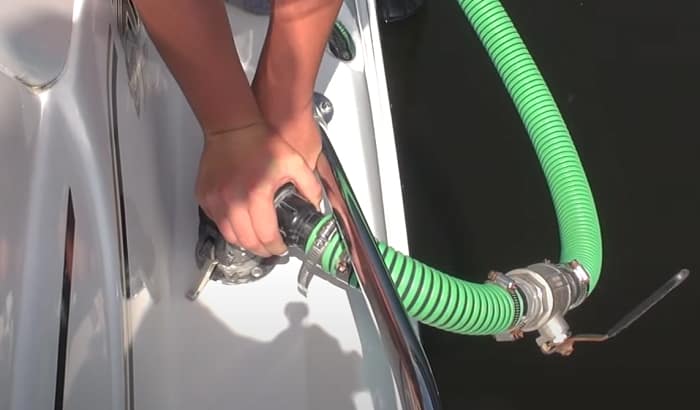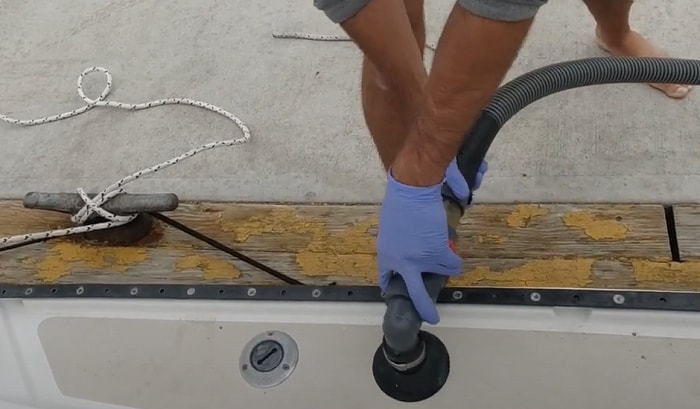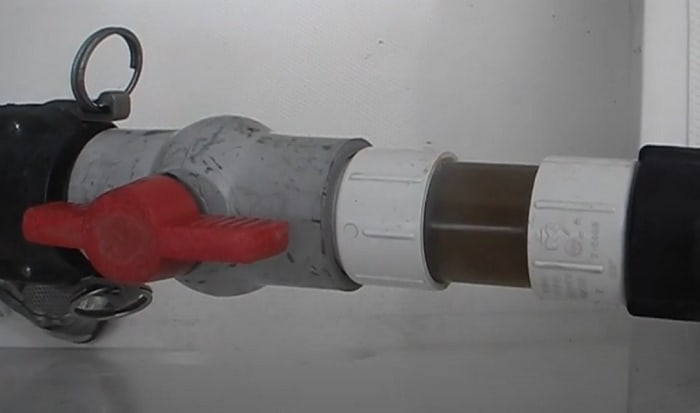For beginners, the thought of having to learn how to pump out boat holding tank at home may seem intimidating. But, you do not have to fret! You can rely on this article with all the necessary steps that can guide you from A to Z!
There are three ways to clean up your boat’s holding tank after an exhilarating sailing trip. You can either do it by bucket method, maceration or dumping without involving maceration.
Read all about the three methods to find out which one is the most convenient and relevant to you.
Table of Contents
Different Methods of Pumping Out Boat Holding Tanks at Home or Offshore
Cleaning out is a must when you empty your boat’s holding tank at home. With the help of a septic tank or city sewer, you’ll be able to safely get rid of the waste.
Before going over different methods, you should know that you would never directly release black or gray water into your toilet at home. The volume of the boat’s tank is much bigger than the toilet’s capacity, so it’s best that you don’t force it.
1. Bucket Method
Ideally, the bucket method is for small boats’ holding tanks. It’s only recommended for tanks with the size of a few gallons.
Materials to gather include Gloves, a mask or face covering, and a 5-gallon bucket exclusively used for this purpose.
Steps to Follow:
- Before getting the ball rolling, you have to prepare yourself by wearing gloves and a face covering.
- Get the bucket that you’ll solely use for this task. For the sake of sanitation, it mustn’t be used for other purposes. You may buy one from local stores that sell boat accessories or a reputable online store.
- Place the bucket under the tank before you slowly open the valve. Then, you can start to remove the tank’s content. Let the waste flow into the bucket and you can close the valve once you’re finished.
Opening the valve should be done slowly to prevent splashing. You would never want to face a fountain of waste!
- The PVC pipe is found above the ground situated between the house and tank. There’s a screw cap that you have to unscrew before dumping the waste. This typically takes the waste to the septic port or city sewer.
- If the tank is not empty, you have to repeat the process. Once you are done, don’t forget to clean and disinfect the bucket before storing it away.
Some Pro-tips:
- If cleanout is missing on your septic, you have to access the port instead. When doing so, be careful as the port tends to release harmful gases from the septic.
Inhaling such gases is dangerous and even fatal. Also, you should try to find a port that is near your house for convenience.
- Find and pour the waste on the baffle’s right side which is the farthest from your house and located in the middle part of the septic tank. A baffle stores solid waste so you won’t have a clogging issue at home.
- There are good bacteria inside the septic tank that helps break down the waste. That’s why you don’t have to allow access to pot open for a long time as it might eradicate them.
- Never dump the waste into the toilet as you will be bothered with clogging. It can also wreck your plumbing system which will involve expensive repairs. Without a septic tank, your other option is to empty the tank at the dump station.
2. Maceration
This is an alternative process to the bucket method. However, some people may find it gross. To be honest, it can also be a bit complicated but you can ease things out by preparing ahead.
A macerator pump will help you crush the waste and channel it to the septic tank or cleanout port. It’s a great way for dumping but it takes time for the waste to be crushed.
You’ll need to spend on the macerating machine and some tools. Thus, you will need the following:
- A macerator pump for crushing waste
- Hose adapter
- CDFJ adapter
- Garden hose or marine hose for dumping waste only
What to do:
- Get the hose adapter to connect the macerator to your boat’s waste outlet
- To attach the garden hose to the macerator, you’ll need a CDFJ adapter. The end of the hose should be fastened to the septic tank. It’s much better if the hose is short so the waste doesn’t have to travel a long way and the pump won’t be strained.
- Before you turn on the macerator pump, you have to open the waste outlet valve of your boat.
- Keep pouring water into the boat’s system until clear water comes out of it. It signals that you’ve successfully emptied the tank.
Some Pro Tips:
- Only follow the recommended way of disposing waste, which is by dumping into the cleanout port. Never consider flushing it in the toilet if you don’t want to clean a mess.
- You may use a safe holding tank treatment when you deposit the waste in your septic tank at home. But be wary of using any harmful chemicals.
- The practice of properly dumping waste should be based on the regulations of the homeowner’s association in your neighborhood.
3. Dumping Without Maceration
Since the process of maceration is omitted, this method is straightforward. Among the choices of pumping out the boat’s holding tank, this one doesn’t require much time.
You’ll only have to connect the tank to the cleanout port or access port by using a sewer hose to flush out the waste. But be mindful when you empty the tank. You shouldn’t add the waste too quickly as it causes overloading.
Forcing the waste into the lateral line will also cause overloading. Avoid disrupting the scum layer when you open the septic tank through its access lid. Also, don’t dump the waste directly as it can damage the septic.
Troubleshooting – What If There’s an Issue With the Pump and the Boat?
After knowing the methods of pumping out waste from your boat’s holding tank, there are times that you encounter some problems. When you can’t do it, there might be some issues with the pump or the tank’s passage in the boat.
- Troubleshooting the pump
From time to time, the pump-out machine can run out of suction and causes the unit to cease. The common cause of these circumstances is a missing prime or worn-out diaphragm.
You can have the repairing done at a marina. There are times that you would need to wait for the operator. If this happens, you can transfer to another marina.
- Troubleshooting the boat
Have you ever encountered a scenario where the pump works properly but nothing gets out of the tank? One reason for this to happen is if you have a clogged pump-out hose. This is the result of overfilling the holding tank with waste or tissue paper.
This issue may also arise when the boat sloshes and heels wastewater into the hose. You can get rid of it by making a plumber’s snake go down into the pump-out house from the deck.
Reminders About Boat Sewage
- Get an approved Marine Sanitation Device before you start installing a toilet in your vessel. The Type III holding tank is the ideal equipment. You’ll also be required to use treatment devices.
- You have to remember the rules if you don’t want to be in trouble with the authorities. Don’t forget that it’s illegal to expel untreated sewage from a boat on any inland water within the scope of three miles of shore within the coastal waters.
- It’s best to study more about boat sewage regulations. Some areas prohibit dumping treated waste. Your neighborhood may be one of them.
Conclusion
So, how to pump out boat holding tank at home? There are three ways to do it but whichever you follow, you need to be extra careful in every step that you take. Be very particular because what you’re handling is waste.
You don’t want to make more mess out of it nor do you want to damage the septic tank. As long as you follow the steps and tips in this article, you should do fine.

I am passionate about water sports and technical fields, so combining both makes me interested in making contents about boat accessories. With my partner, we went on many trips and sports games together, which led us to think about how we can spread our joys and passions to many people.



